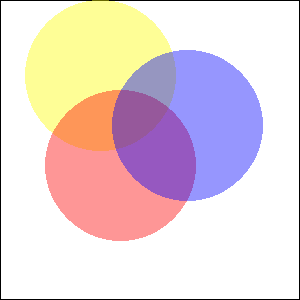imagecolorallocatealpha() behaves identically to imagecolorallocate() with the addition of the transparency parameter alpha.
An image resource, returned by one of the image creation functions, such as imagecreatetruecolor().
Value of red component.
Value of green component.
Value of blue component.
A value between 0 and 127. 0 indicates completely opaque while 127 indicates completely transparent.
A color identifier or FALSE if the allocation failed.
This function may return Boolean FALSE, but may also return a non-Boolean value which evaluates to FALSE. Please read the section on Booleans for more information. Use the === operator for testing the return value of this function.
Returns FALSE if the allocation failed. Previously -1 was returned.
<?php
$size = 300;
$image=imagecreatetruecolor($size, $size);
// something to get a white background with black border
$back = imagecolorallocate($image, 255, 255, 255);
$border = imagecolorallocate($image, 0, 0, 0);
imagefilledrectangle($image, 0, 0, $size - 1, $size - 1, $back);
imagerectangle($image, 0, 0, $size - 1, $size - 1, $border);
$yellow_x = 100;
$yellow_y = 75;
$red_x = 120;
$red_y = 165;
$blue_x = 187;
$blue_y = 125;
$radius = 150;
// allocate colors with alpha values
$yellow = imagecolorallocatealpha($image, 255, 255, 0, 75);
$red = imagecolorallocatealpha($image, 255, 0, 0, 75);
$blue = imagecolorallocatealpha($image, 0, 0, 255, 75);
// drawing 3 overlapped circle
imagefilledellipse($image, $yellow_x, $yellow_y, $radius, $radius, $yellow);
imagefilledellipse($image, $red_x, $red_y, $radius, $radius, $red);
imagefilledellipse($image, $blue_x, $blue_y, $radius, $radius, $blue);
// don't forget to output a correct header!
header('Content-Type: image/png');
// and finally, output the result
imagepng($image);
imagedestroy($image);
?>
The above example will output something similar to:

Please login to continue.